1. Castillo-Hernandez MC, Guevara-Balcazar G, Lopez-Sanchez P, Asbun-Bojalil J, Lopez RM, Castillo EF, Castillo-Henkel C. The influence of constitutive COX-2 in smooth muscle tissue on the contractile effect of phenylephrine in the rat abdominal aorta. Front Biosci (Elite Ed). 2010; 2:441–448. PMID:
20036891.
2. Kähönen M, Tolvanen JP, Sallinen K, Wu X, Pörsti I. Influence of gender on control of arterial tone in experimental hypertension. Am J Physiol. 1998; 275:H15–H22. PMID:
9688891.
3. Pairet M, Engelhardt G. Distinct isoforms (COX-1 and COX-2) of cyclooxygenase: possible physiological and therapeutic implications. Fundam Clin Pharmacol. 1996; 10:1–17. PMID:
8900495.

4. Smith WL, Dewitt DL. Prostaglandin endoperoxide H synthases-1 and -2. Adv Immunol. 1996; 62:167–215. PMID:
8781269.

5. Zidar N, Dolenc-Strazar Z, Jeruc J, Jerse M, Balazic J, Gartner U, Jermol U, Zupanc T, Stajer D. Expression of cyclooxygenase-1 and cyclooxygenase-2 in the normal human heart and in myocardial infarction. Cardiovasc Pathol. 2007; 16:300–304. PMID:
17868881.

6. Feng L, Sun W, Xia Y, Tang WW, Chanmugam P, Soyoola E, Wilson CB, Hwang D. Cloning two isoforms of rat cyclooxygenase: differential regulation of their expression. Arch Biochem Biophys. 1993; 307:361–368. PMID:
8274023.

7. O'Neill GP, Ford-Hutchinson AW. Expression of mRNA for cyclooxygenase-1 and cyclooxygenase-2 in human tissues. FEBS Lett. 1993; 330:156–160. PMID:
8365485.
8. Iseki S. Immunocytochemical localization of cyclooxygenase-1 and cyclooxygenase-2 in the rat stomach. Histochem J. 1995; 27:323–328. PMID:
7635765.

9. Luksha L, Poston L, Gustafsson JA, Aghajanova L, Kublickiene K. Gender-specific alteration of adrenergic responses in small femoral arteries from estrogen receptor-beta knockout mice. Hypertension. 2005; 46:1163–1168. PMID:
16216990.
10. Connolly C, McCormick PA, Docherty JR. Effects of the selective cyclooxygenase-2 inhibitor nimesulide on vascular contractions in endothelium-denuded rat aorta. Eur J Pharmacol. 1998; 352:53–58. PMID:
9718267.

11. Gregg AR, Thompson LP, Herrig JE, Weiner CP. Regionalization of endothelium-dependent relaxation in the thoracic aorta of pregnant and nonpregnant guinea pigs. J Vasc Res. 1995; 32:106–111. PMID:
7734656.

12. Perrone MG, Scilimati A, Simone L, Vitale P. Selective COX-1 inhibition: A therapeutic target to be reconsidered. Curr Med Chem. 2010; 17:3769–3805. PMID:
20858219.
13. Matz RL, Van Overloop B, Gaubert E, Gairard A. Maturation reveals a decrease in endothelium-dependent contraction induced by depolarization in the aorta of spontaneously hypertensive rats. Life Sci. 2001; 69:1791–1804. PMID:
11665841.

14. Asbún-Bojalil J, Castillo EF, Escalante BA, Castillo C. Does segmental difference in alpha 1-adrenoceptor subtype explain contractile difference in rat abdominal and thoracic aortae? Vascul Pharmacol. 2002; 38:169–175. PMID:
12402516.
15. Lamb VL, Schwartz AJ, Rohn WR, Kaiser L. Cyclooxygenase inhibitors depress norepinephrine constriction of rat abdominal, but not thoracic, aorta. Eur J Pharmacol. 1994; 256:221–226. PMID:
7914169.

16. Asano K, Lilly CM, Drazen JM. Prostaglandin G/H synthase-2 is the constitutive and dominant isoform in cultured human lung epithelial cells. Am J Physiol. 1996; 271:L126–L131. PMID:
8760142.

17. Hennan JK, Huang J, Barrett TD, Driscoll EM, Willens DE, Park AM, Crofford LJ, Lucchesi BR. Effects of selective cyclooxygenase-2 inhibition on vascular responses and thrombosis in canine coronary arteries. Circulation. 2001; 104:820–825. PMID:
11502709.

18. Vane JR, Bakhle YS, Botting RM. Cyclooxygenases 1 and 2. Annu Rev Pharmacol Toxicol. 1998; 38:97–120. PMID:
9597150.

19. Morita I. Distinct functions of COX-1 and COX-2. Prostaglandins Other Lipid Mediat. 2002; 68-69:165–175. PMID:
12432916.

20. LaBelle EF, Polyak E. Norepinephrine stimulates arachidonic acid release from vascular smooth muscle via activation of cPLA2. Am J Physiol. 1998; 274:C1129–C1137. PMID:
9575810.
21. Qi Z, Cai H, Morrow JD, Breyer MD. Differentiation of cyclooxygenase 1- and 2-derived prostanoids in mouse kidney and aorta. Hypertension. 2006; 48:323–328. PMID:
16801485.

22. Kangussu LM, Olivon VC, Arifa RD, Araújo N, Reis D, Assis MT, Soriani FM, de Souza Dda G, Bendhack LM, Bonaventura D. Enhancement on reactive oxygen species and COX-1 mRNA levels modulate the vascular relaxation induced by sodium nitroprusside in denuded mice aorta. Fundam Clin Pharmacol. 2015; 29:150–163. PMID:
25619310.

23. Kumar P, Padi SS, Naidu PS, Kumar A. Cyclooxygenase inhibition attenuates 3-nitropropionic acid-induced neurotoxicity in rats: possible antioxidant mechanisms. Fundam Clin Pharmacol. 2007; 21:297–306. PMID:
17521299.

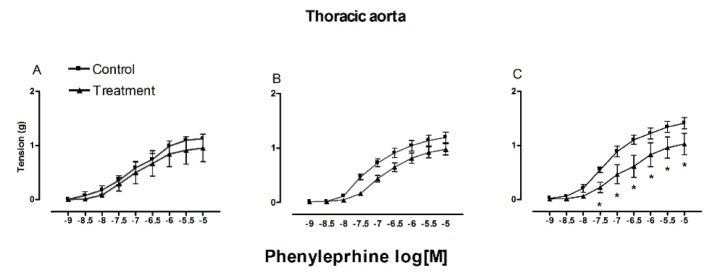
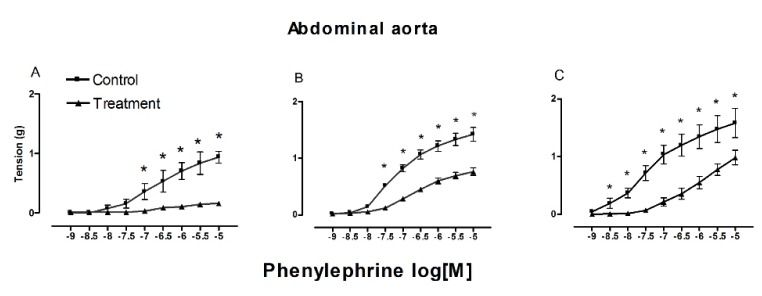




 PDF
PDF ePub
ePub Citation
Citation Print
Print



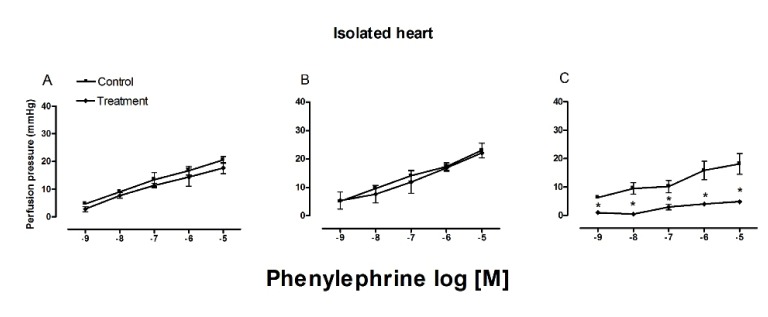
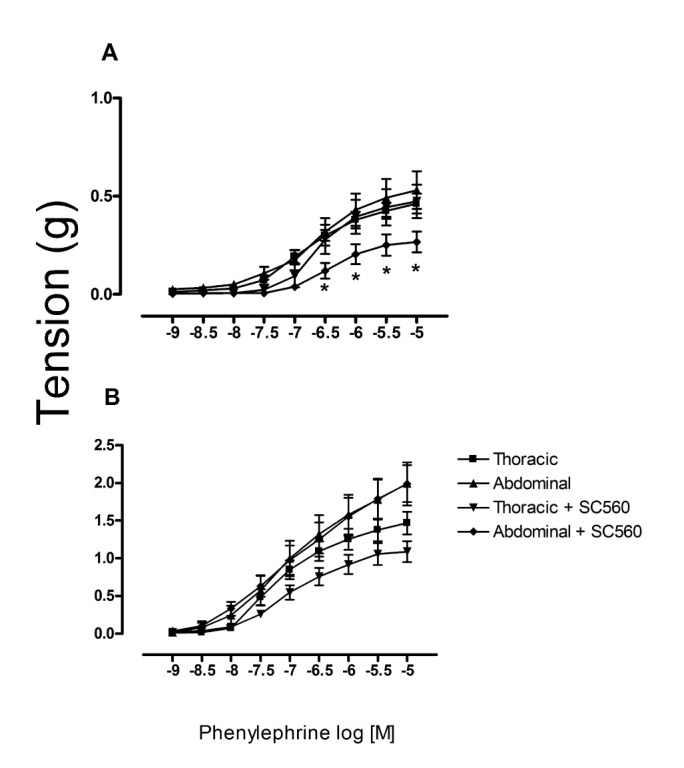
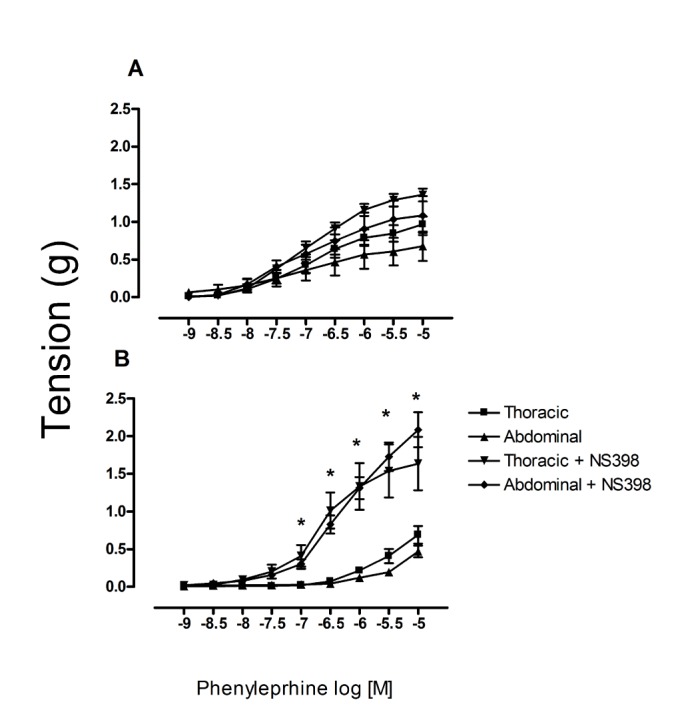
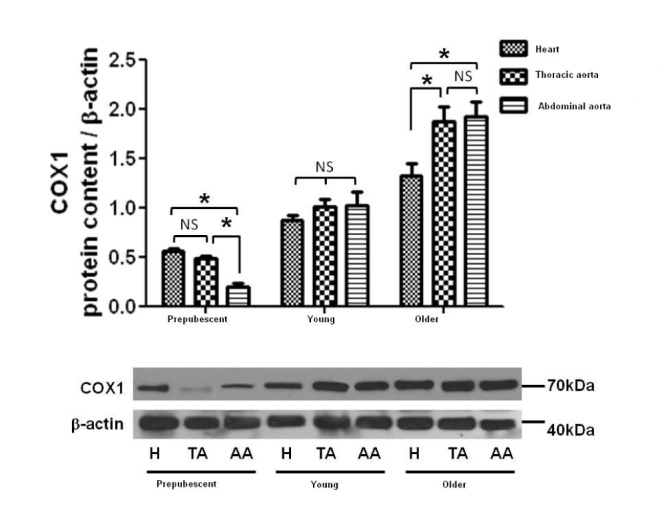

 XML Download
XML Download